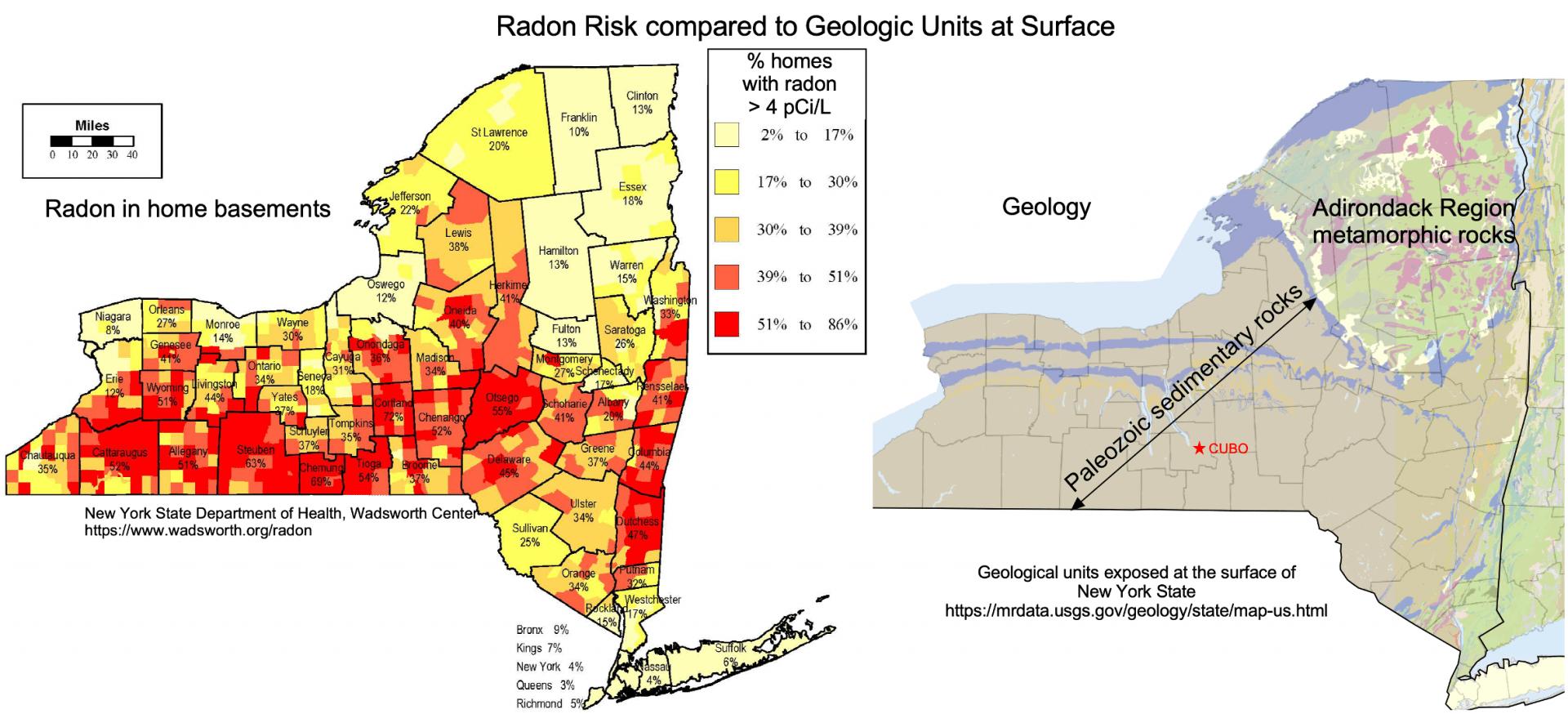The concentration of radioactivity elements varies among rock types. For example, it is typically low in limestone, sandstone, and the igneous rock anorthosite, all of which underlie large areas of New York State. In some other common types of rocks in New York State, such as shale and some granites, there are relatively elevated amounts of radioactive elements.
One of the concerns about radioactivity comes from the radioactive gas radon, which is a decay product of uranium and thorium in the rock. The map of rock layers (that is, the “geologic map”) of New York State (right side of figure) is similar in pattern to the indoor radon frequency map (left side of figure), because the rocks are the source of the radioactive elements.

NORMS and Adirondack Region Geology
In northern New York State, where igneous and metamorphic rocks form the Adirondack Mountains, few homes are at risk from radon. Yet amidst the widespread anorthosites and other low-radiation rocks, there are also granites and syenites. In the granite and syenite, feldspar of a type rich in potassium is an abundant mineral. Some of this potassium is radioactive, but potassium does not produce a gas such as radon that is a health concern. Although 20th century prospectors searched the Adirondacks for rocks with exceptionally high concentrations of uranium in hopes of mining it as “ore,” only small amounts were found.
Feldspars are also a relatively common mineral among grains of sand, and as a result some sandstones have elevated radioactivity. This is expected to be true for sandstone whose grains came from natural break down of the igneous and metamorphic rocks. Sandstones like this in New York State, such as the Potsdam Sandstone, which formed from weathering of the igneous and metamorhic rocks now found beneath it. On the map below, the Potsdam Sandstone is the light brown areas that fringe the eastern, northern and western margins of the Adirondack Mountains.

NORMS and New York’s sedimentary rocks
In surface rocks along much of the Mohawk Valley and the lake plain south of Lake Ontario are limestone and dolostone, which have low radioactivity. The sedimentary rocks with generally higher contents of radioactivity are shales. However, in most New York shale, the dominant radioactive element is potassium, which does not produce radon (and therefore is of little health concern). Small amounts of thorium occur in the shales and is likely the source of environmental radon.
A small fraction of New York’s shales, such as the Marcellus shale, are also enriched in uranium. The reason those shales contain uranium can be tied back to their origin hundreds of millions of years ago. They originated as “muck” that accumulated on the bed of a shallow sea in which large numbers of plankton and other organisms accumulated on the ocean floor and a relatively small proportion of it decomposed. Uranium within the seawater became bound within the organic matter. The mud was buried by more layers of sediment and eventually solidified into the rocks we call “organic-rich shale.”

Digging deeper: More about NORMs and drilling CUBO
